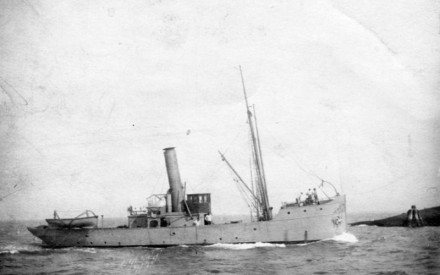History
Naming
The Frans Naerebout was built as a steam pilot transport vessel and was named after the famous pilot and lifesaver at sea Frans Naerebout (1748 - 1818). Since 1989, another Frans Naerebout works for the Dutch coast guard as a buoy laying vessel.
Mobilisation in 1914
In 1914, the Frans Naerebout was mobilised to serve as an auxiliary mine layer and mine sweeper. The normal crew of eleven men was supplemented to 19 for this goal. With this, the ship became the first Dutch minesweeper.
On May 2nd, 1918, a sunny day with a moderate east-northeast breeze, the ship sailed near the Stortemelk, the sea inlet between the Dutch coalstal islands of Vlieland and Terschelling.
On March 30th, the torpedo boat Hr. Ms. G11 had already run on a mine there. So the inlet needed to be cleared. While the Frans Naerebout was working on this, things went wrong. Around two o'clock in the afternoon, the ship ran onto a mine itself and sunk within two minutes. Nine crew members, amongst which commander J. Gayaard, were saved. Ten men perished. The transporter Amsterdam and the mine sweeper Lutine picked up the victims from the sea. Some had already died by then. A number of crewmen later washed up on the beach of Vlieland.
Description
Yard: Koninklijke Maatschappij De Schelde, Flushing (yard number 99)

| Master | Gayaard, J. |
|---|---|
| People on board | 19 |
| Speed | 11 knots ~ 13 mph (20 km/h) |
| Length | 108 feet (32.9 m) |
| Width | 21 ¼ feet (6.5 m) |
| Draft | 8 feet (2.5 m) |
| Displacement | 232 ton |